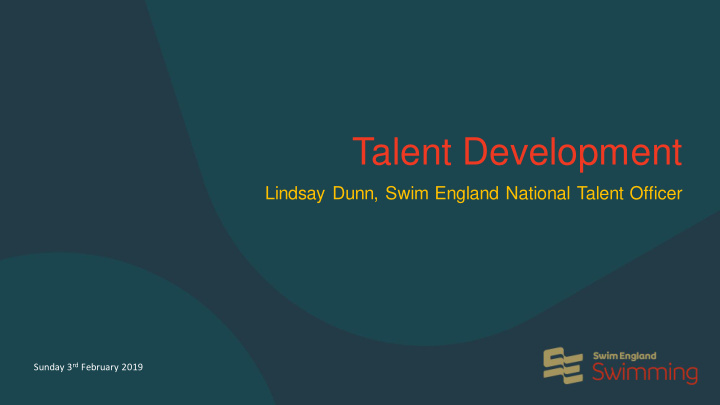



Talent Development Lindsay Dunn, Swim England National Talent Officer Sunday 3 rd February 2019
England Talent aim to influence: • The ‘Daily T raining Environment’ LTS, Clubs, Performance Centres and National Training Centres • The ‘Domestic Competition Programme ’ Calendar planning (Championships, Open Meets, other Competitions organised by Key Partners) • The ‘Development Programme Pathway’ Provides enhanced support to the swimmers and the team behind the swimmers
TRANSITION POINTS Number of Clubs Programme Athletes have had TRENDS during their career • Single Club – 10% 10% 15% • 4 or more Clubs – 15% • 2/3 Clubs is the ‘norm’ 39% 36% 1 Club 2 Clubs 3 Clubs 4 or more Clubs
FIRST CLUBS Average Available Pool Time – Top Squad (Hours/Week) 25 20.00 20 14.29 15 10.75 9.56 10 5 0 1st Club - 1 Club 1st Club - 2 Clubs 1st Club - 3 Clubs 1st Club - 4 Clubs
Main Journey Types… First Club 1st Transition 2nd Transition Age Age Age 2 Clubs 8.6 16.4 3 Clubs 8.2 12.8 17.6
3 CLUB 1st Transition 2nd Transition First Club Age Age JOURNEY 3 Transitions 8.24 12.8 17.6 • Transitions mirror ages in which changes in education occur • There are more options available to change geographically • Clubs at the different stages of their journey are setup to provide different things
What does it look like in Cornwall? • No clubs offering 20 hours per week to their Top Squad. • Limited land training/ SSSM provision. • Very few head coaches due to the limited number of larger programmes. • Limited coaches and swimmers populating our pathways …
Moving Cornwall Forwards • Survey distributed to gather insight into current club provision in Cornwall. • Review of the survey to highlight common themes/ issues which need to be addressed. • Identification of one club (or a few clubs already working together/ willing to work together) who SE would work with to develop their club structure, governance, training provision for their top squad etc.
Recommend
More recommend